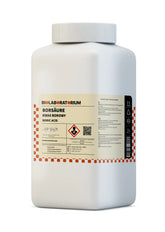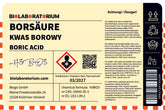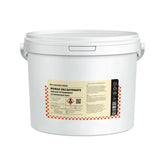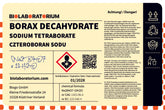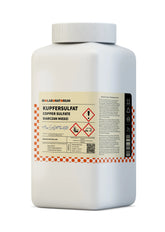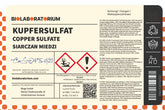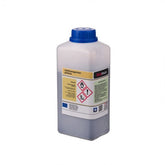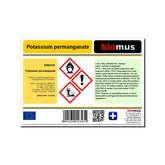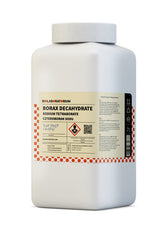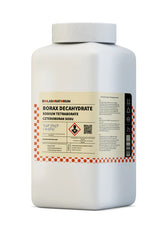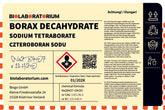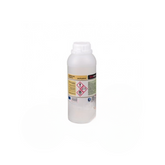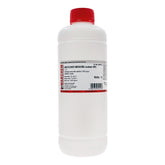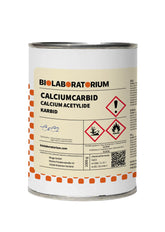Fumaric acid - A versatile organic acid with industrial applications
Fumaric acid, also known as trans-butenedioic acid, is an organic dicarboxylic acid widely found in nature. It plays an important role in various industrial processes and has numerous applications in the chemical industry. In this blog post, we will take a closer look at this fascinating substance and explore its diverse uses.
Chemical properties and structure of fumaric acid
Fumaric acid is an unsaturated dicarboxylic acid with the molecular formula C₄H₄O₄. It has two carboxyl groups (-COOH) and a double bond between the carbon atoms. This structure gives fumaric acid high reactivity and versatility.
Due to its cis-trans isomerism, fumaric acid exists in two spatial arrangements: the trans configuration (fumaric acid) and the cis configuration (maleic acid). This distinction is important because the two isomers exhibit slightly different chemical and physical properties.
Fumaric acid is a crystalline, colorless substance that is well soluble in water. It has a characteristic, slightly acidic taste and a faint odor. Furthermore, fumaric acid is thermally stable and can be heated up to about 200 °C without decomposition.
Occurrence and extraction of fumaric acid
Fumaric acid naturally occurs in various organisms, especially in fungi, lichens, and higher plants. In nature, it is formed as an intermediate product in the citric acid cycle (also called the Krebs cycle), a central metabolic pathway in living organisms.
Industrially, fumaric acid is mainly produced by chemical synthesis. Typically, maleic anhydride is used as the starting material, which is obtained by catalytic oxidation of n-butane or benzene. This is followed by isomerization to the trans configuration to obtain fumaric acid.
Alternatively, fumaric acid can also be produced through biotechnological methods, such as the fermentation of carbohydrates by certain microorganisms. This method is gaining increasing importance as it is more environmentally friendly and sustainable than classical chemical synthesis.
Industrial Applications of Fumaric Acid
Fumaric acid has diverse uses in industry. Some of the most important application areas are:
1. Coating and Hardening Agents
Fumaric acid is used as a hardener in coatings, varnishes, and adhesives. It reacts with polyols, such as glycerin or pentaerythritol, thereby increasing the hardness, durability, and weather resistance of the resulting products.
2. Organic Solvents
Fumaric acid esters, such as dimethyl fumarate or diethyl fumarate, serve as environmentally friendly solvents in various industrial sectors. They are used in paints, varnishes, adhesives, and cleaning agents.
3. Food and Feed Additives
Fumaric acid is used as a preservative, antioxidant, and pH regulator in the food and feed industry. It can be used, for example, in baked goods, beverages, or animal feed.
4. Pharmaceutical Applications
In the pharmaceutical industry, fumaric acid serves as a starting material for the production of medicines, especially for the treatment of skin diseases such as psoriasis.
5. Chemical Intermediates
Fumaric acid can serve as a starting material for the synthesis of other chemical compounds, such as succinic acid, maleic acid, or fumarates. These derivatives, in turn, are used in numerous industrial processes.
Environmental Aspects and Sustainability
In addition to the diverse industrial applications, sustainability in the production and use of fumaric acid is becoming increasingly important. The use of biotechnological methods for production can significantly reduce energy consumption and environmental impact compared to traditional chemical synthesis.
Furthermore, the use of fumaric acid esters as environmentally friendly solvents and their application as food and feed additives contribute to improving sustainability. Overall, fumaric acid is a versatile organic acid that plays an important role in modern chemistry and industry due to its chemical properties and industrial applications.
Conclusion
Fumaric acid is a fascinating organic compound that is widespread in nature and has diverse industrial uses. From coatings and solvents to food additives and pharmaceutical applications – fumaric acid is an extremely versatile substance with great potential for future developments in chemistry and industry.
Through the use of sustainable production methods and the development of new application areas, fumaric acid can make an important contribution to promoting environmental protection and resource efficiency. Overall, fumaric acid is a fascinating example of how innovative chemistry can help solve current challenges.

